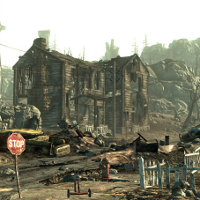(This article contains a discussion of the storyline of Warframe. It contains many things that some people may consider spoilers. Trust me. Read it.)
Warframe is a free-to-play online third-person sci-fi shooter by Ontario developer Digital Extremes where you control a cool, acrobatic robo-warrior in a grindy co-op game where the PR tagline is “ninjas play free”. You fight space nazis, mechanized capitalists, and a bioplague in a handful of standard mission types to get loot and level up your gear.
Warframe, written and designed by Creative Director Steve Sinclair, Lead Writer Cam Rogers, and a team of other designers and writers, is the story of a dark future set in a fallen posthuman solar empire, where the generational victims of the cruel, long-lost Orokin are in constant conflict and where solidarity and empathy are the strongest forces against an apparently-inevitable cosmic struggle borne out of the resonating echoes of exploitation and familial loss.
Continue reading Warframe Has the Best Worldbuilding In Video GamesThe Moon came back.

